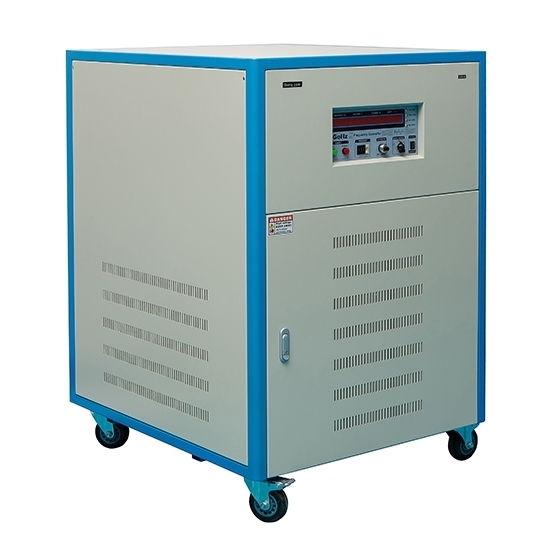
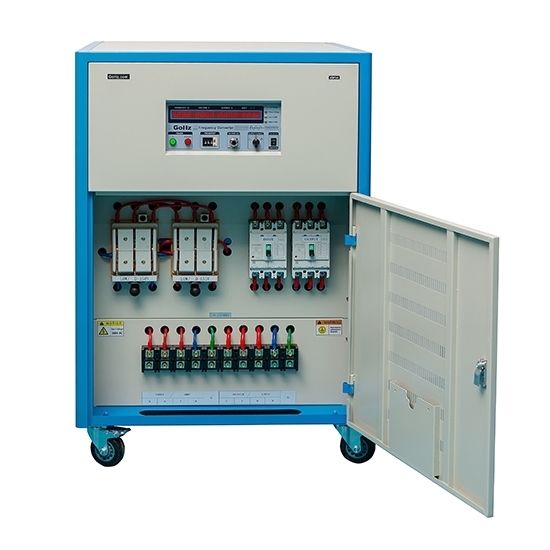
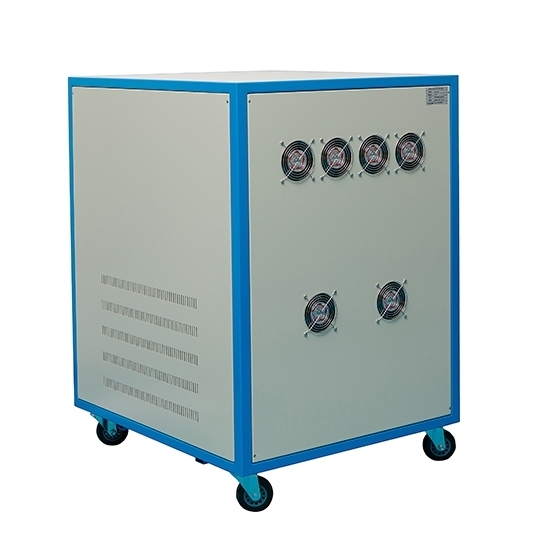
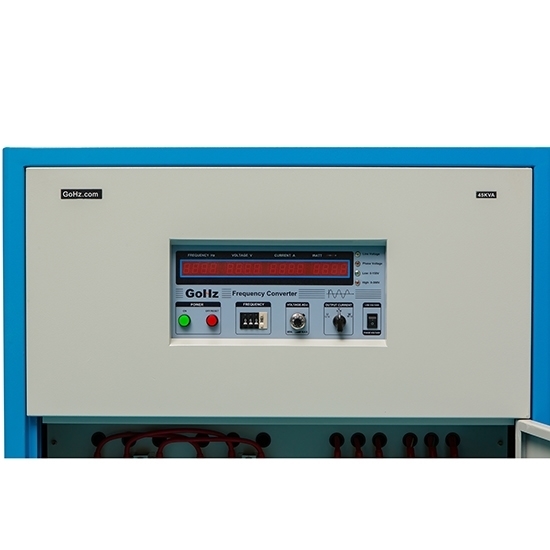
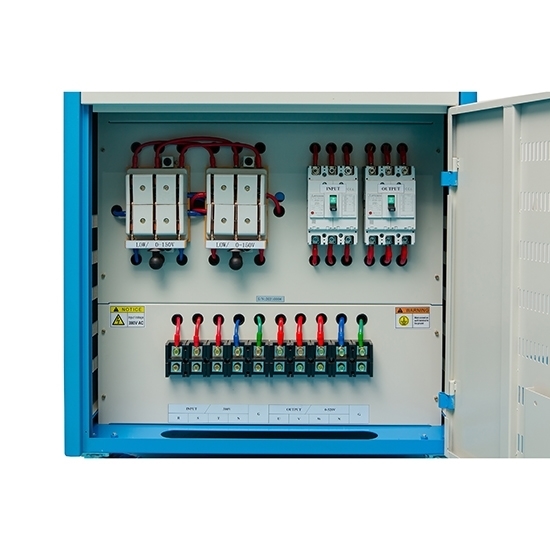
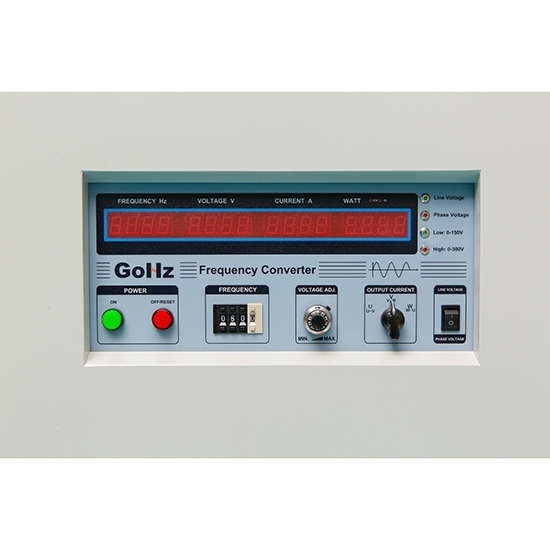
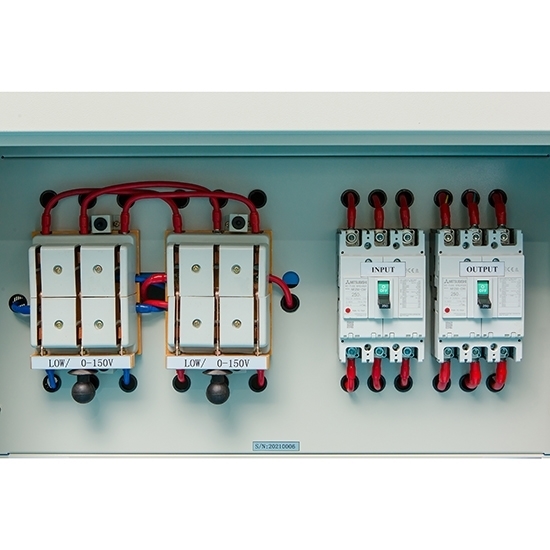
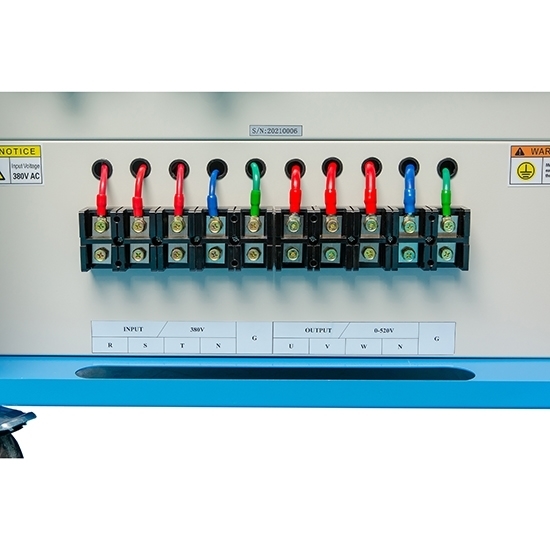
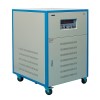
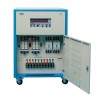
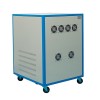
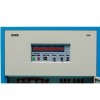
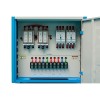
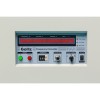
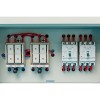
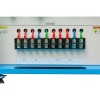
- Stock: In Stock
- Model: HZ-50-3345
- Weight: 1.00
- SKU: HZ-50-3345
Available Options
45 kVA three phase static frequency converter, compatible with 3 phase 208v/ 220v/ 380v/ 415v/ 460v/ 480v 50Hz/60Hz power system, output pure sine wave for testing and industrial equipment.
Specification:
| Model | HZ-50-3345 | |
| Capacity | 45 kVA | |
| Dimension | 900*800*1200 mm | |
| Weight | 400 kg | |
| Input | Voltage | 3 Phase 4 Wire: Wye Type 190/110, 200/115, 208/120, 220/128, 230/132, 240/139V ±10% (option *) |
| 3 Phase 4 Wire: Wye Type 380/220, 400/230, 415/240, 440/254, 460/265, 480/277V ± 10% (option *) | ||
| 3 Phase 4 Wire: Della Type 220, 230, 240, 380, 400, 415, 440V ± 10% (option *) | ||
| Frequency | 50 Hz, 60 Hz or 400 Hz ± 5% | |
| Output | Voltage, current | 110V Setting (Low grade): 0-150V (phase voltage), 0-260V (line voltage) 125A |
| 220V Setting (High grade): 0-300V (phase voltage), 0-520V (line voltage) 62.5A | ||
| Load stabilization Rate | ≤±1% | |
| Frequency | 50Hz, 60Hz up to 400Hz adjustable Note: -When the output is 400Hz, the load capacity can only reach 50% of the rated capacity. -When the output is ≤120Hz, the load capacity can reach 100% of the rated value. -You can just adjust converter output frequency in the range (40-400Hz) for 400Hz option. | |
| Frequency Stability | ≤±0.01% | |
| Harmonic Distortion | Pure Sine Wave ≤2% | |
| Frequency meter | 4 digit, digital frequency meter, resolution 0.1Hz/Step | |
| Voltmeter | 4 digit, digital voltage meter, resolution 0.1V | |
| Ammeter | 4 digit, digital ammeter, resolution 0.1A | |
| Watt meter | 4 digit, digital Watt meter, resolution 0.1W | |
| Protection | With overload, short circuit, over temperature | |
| Instantaneous power failure protection and alarm device | ||
| Working Environment | Temperature | 0 - 40 deg.℃ |
| Humidity | 0 - 90% (Non condensation) | |
| Warranty | 18 months | |
Tips: Can a 50Hz motor run on 60Hz power source?
The frequency is increased from 50 Hz to 60 Hz and the motor will not work properly. The main effects to the motor are:
First, the current and output torque are reduced. The motor is an inductive load, the frequency increases, the impedance of the motor increases, and the current decreases. The output torque is also reduced.
Second, the speed increases. The synchronous speed of the motor is proportional to the frequency of the power supply. Taking a two-pole motor as an example, the synchronous speed is 3000 rpm at 50Hz and the synchronous speed is 3600 rpm at 60Hz.
Third, the iron loss increases. The iron loss is mainly eddy current. The eddy current is proportional to the frequency, and the eddy current increases to increase the temperature rise of the motor.
